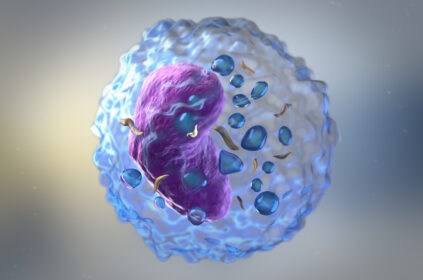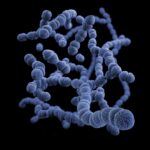Unfortunately, people with relapsed or refractory acute myeloid leukemia (AML), or those with TP53-mutated AML, have a poorer treatment response and worse outcomes. Identifying therapies that could help this population would provide a better quality of life overall.
Treadwell Therapeutics is working towards this goal with the development of ocifisertib (CFI-400945), a first-in-class oral PLK4 inhibitor. According to Kristi Rosa in OncLive, the U.S. Food and Drug Administration granted Orphan Drug designation to ocifisertib in February 2024.
Orphan Drug designation is granted to drugs or biologics intended to treat, diagnose, or prevent rare conditions. Rare conditions affect fewer than 200,000 people nationwide. As an incentive to develop orphan drugs, this designation also comes with benefits such as fee waivers, tax credits, and seven years of market exclusivity if the drug is approved.
What We Know About Ocifisertib
So far, ocifisertib is being evaluated in multiple studies. A Phase 1 dose escalation study is exploring 64mg/kg, 96mg/kg, 128mg/kg, 160mg/kg, 192mg/kg, or 224mg/kg in adults with either acute myeloid leukemia or myelodysplastic syndromes (MDS). In addition to identifying the ideal dose for future studies, researchers also want to know both how safe and well-tolerated ocifisertib is.
Additionally, researchers are evaluating the pharmacokinetic and pharmacodynamic profiles of ocifisertib with/without azacitidine, as well as how safe and effective it is, in the Phase 1b/2 TWT-202 clinical trial. This study includes people with AML and MDS, as well as chronic myelomonocytic leukemia (CMML).
Preliminary data found that half of the people with AML who took 96mg ocifisertib had some response to treatment as soon as the first treatment cycle. However, another individual within this dosage group experienced a dose-limiting toxicity. This dose-limiting toxicity was fungemia (the presence of fungi in the blood), gastroparesis (delayed gastric emptying), septic shock, and enteritis (inflammation of the small intestine).
There were also some adverse effects of treatment, which included febrile neutropenia, nausea and vomiting, diarrhea and abdominal discomfort, fatigue, low blood potassium levels, low blood phosphate levels, anemia (low red blood cell count), low blood magnesium levels, sepsis, pneumonia, and shortness of breath.
What is Acute Myeloid Leukemia (AML)?
Also known as: Acute myelogenous leukemia
Acute myeloid leukemia is a rare cancer that affects the blood and bone marrow. Despite it being rare, it comprises 80% of the leukemia diagnoses in adults. While AML can affect people of all ages, it is more frequently seen in people ages 60+. Doctors don’t know exactly what causes AML, but radiation and chemotherapy can increase the risk of developing it.
In AML, the bone marrow creates abnormal red blood cells, platelets, and a type of white blood cell called myeloblasts. These crowd healthy cells out of the bone marrow. This cancer is aggressive and can be life-threatening. It is important to treat this cancer as quickly as possible. Current treatment options include chemotherapy, arsenic trioxide, all-trans retinoic acid, and stem cell transplants.
Symptoms of AML include fever, easy bruising and unusual bleeding, frequent or recurring infections, pallor (pale skin), shortness of breath, bone pain, lethargy and fatigue, and a swollen liver or spleen.
acute myeloid leukemia AML leukemia oncology Orphan Drug orphan drug designation
Last modified: April 3, 2024











